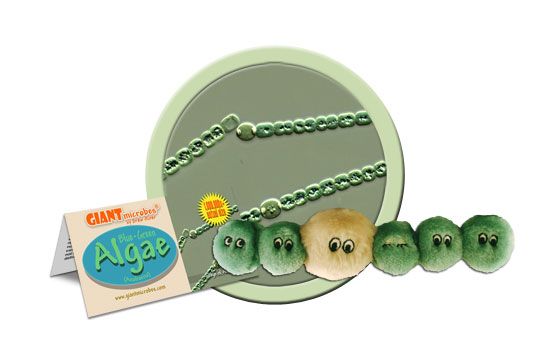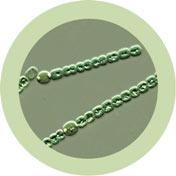Algae (Anabaena)
Out of Stock
Product Details
Additional Information
| Sizes | Giantmicrobes are based on actual microbes, cells, organisms and other critters, only 1,000,000 times actual size! Gigantic (GG) 16-24" XL (XL) 10-15" Original (PD) 5-8" Keychain (KC) 2-4" with clip |
|---|---|
| Materials | Plush from all new materials. Stuffed with polyester fiber fill. Surface washable: sponge with water & soap, air dry. |
| Packaging | Each plush microbe includes a printed card with fun, educational and fascinating facts about the actual microbe or cell. |
| Safety | Every product meets or exceeds U.S. and European standards for safety. For ages 3 and up. |
All about Algae (Anabaena)
FACTS: Much of the muck you see in slimy green water is composed of blue-green algae! (Blue-green algae is the common name for cyanobacteria.)
Cyanobacteria are found worldwide and in many different habitats. They grow in fish tanks and swimming pools, as well as innumerable marine and freshwater environments. They are also found in soil, houseplants, and as symbiotes in animals and plant-life. They can be solitary or colonial and can form large mats and filaments visible to the human eye.
Cyanobacteria are not related to any of the other algal groups; they are actually bacteria that photosynthesize. Anabaena is a type of blue-green algae that likes to form filamentous colonies of green slime. They smell bad, taste worse, and can cause nausea if ingested. (Prolonged exposure can also cause skin irritation.)
Blue-green algae like light and warm stagnant water, so improving water circulation helps to control their numbers. Live plants can also reduce algae populations by providing shade and competition for nutrients. Certain animals, such as tadpoles and algae-eating fish, can disrupt algal communities. And where ecological sensitivity is not required (e.g., in swimming pools) chlorine and algicides provide definitive and categorical results.
| Name | Anabaena got its name from its migration habits. On warm days, the algae rises up to the surface. It comes from Greek roots “ana-“ and “bainein”, which means to rise up or walk up. |
|---|
| Actual Size | The cells are about 2-10 micrometers and grow in long chains. Under a microscope, a single filament looks like a string of beads. |
|---|
| Where It Lives | Anabaena is a genus of blue-green algae, called cyanobacteria. It’s found in lakes, ponds, and gulfs all over the world. They thrive in places that have lots of sun, nutrients, and little wind or tide. |
|---|
| Symptoms | Some species produce toxins that can cause irritation in humans, such as rashes and dizziness. |
|---|
| History | The first documented case of toxic blue-green algae happened in 1878. Livestock and pets to became sick and died around Lake Alexandria in Australia. |
|---|
| Fascinating Facts | They were among the first photosynthetic organisms on earth. Without them, there wouldn’t be enough oxygen available to sustain early life! |
|---|






